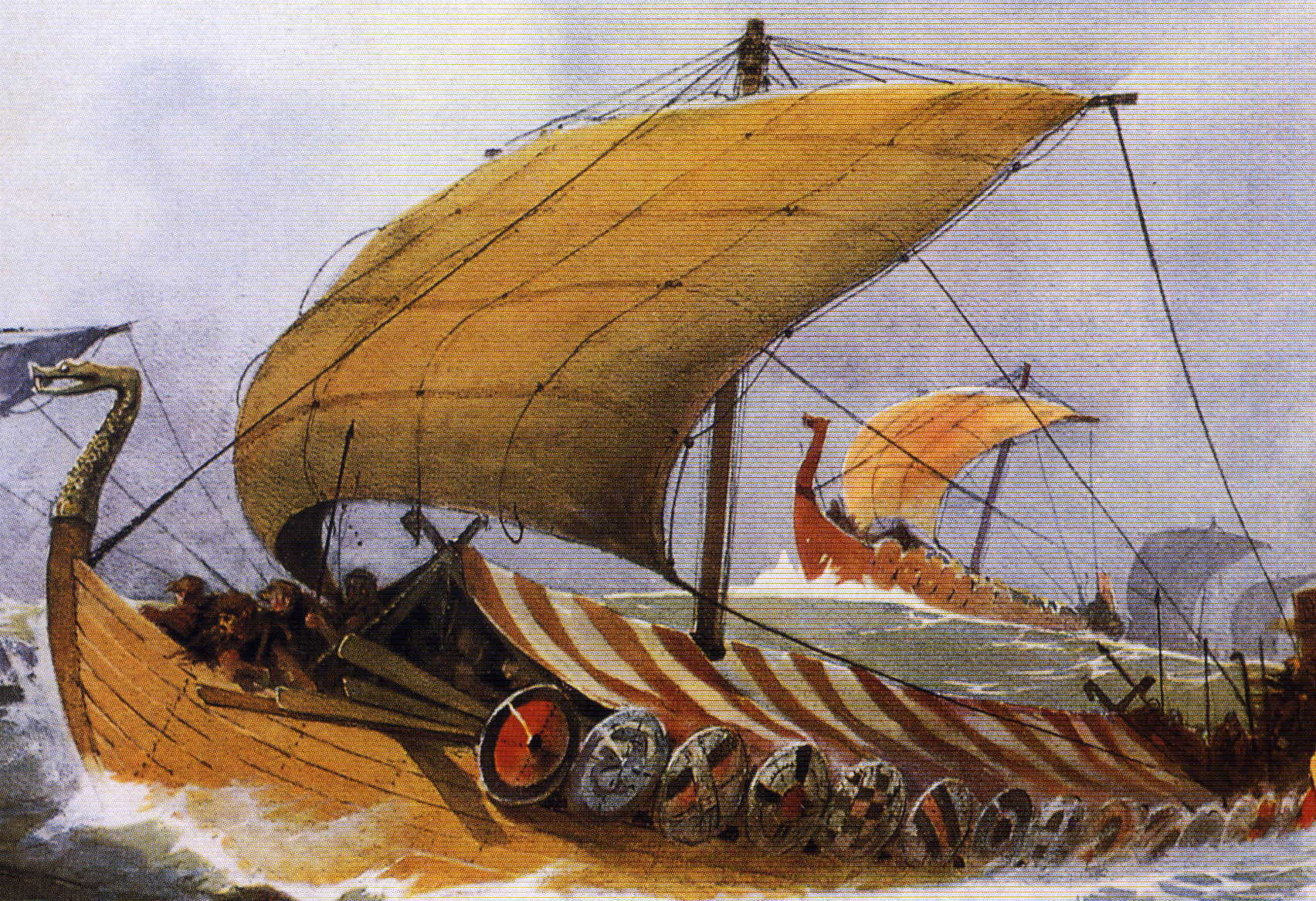 Egypt's navy grew along with its power over the sea, trading materials, spices, arms, and slaves over the seven seas.
Egypt's navy grew along with its power over the sea, trading materials, spices, arms, and slaves over the seven seas.
Towards the end of the 8th century AD a new race dominated the sea, the Vikings. These Nordic peoples were superior shipbuilders and had a tendency to wage war. They set sail westward in search of lands to inhabbit, founding the islands off the Norwegian coast, Faroe islands, and Iceland. The Viking ships also made use of oars and rowers as well as the large, square sail.  The average Viking ship measured somewhere between 12 and 26 meters (40-85 feet). The hull was made with wooden plankes overlapping like roof tiles and riveted into place. They flared outwards greatly and had a low freeboard, making it extremely difficult to heal when sailing upwind. The 10 ft. long rudder was starboard near the stern and was steered with a perpendicular tiller. And from there our modern version of a sailboat evolved.
The average Viking ship measured somewhere between 12 and 26 meters (40-85 feet). The hull was made with wooden plankes overlapping like roof tiles and riveted into place. They flared outwards greatly and had a low freeboard, making it extremely difficult to heal when sailing upwind. The 10 ft. long rudder was starboard near the stern and was steered with a perpendicular tiller. And from there our modern version of a sailboat evolved.
On to the boats themselves...
First you need a hull that floats, usually either wood or fiber glass. And then of course you need your sail, either gaff, square, or Marconi. The square sail is the most common of the ancient sails. Though very efficient when sailing downwind though nearly imposible when sailing on a close reach. The gaff sail, or gaff rig, developed from the lugsail. The gaff rig is hoisted to the top of the mast instead of two thirds and the foot of the sail is secured to a boom.